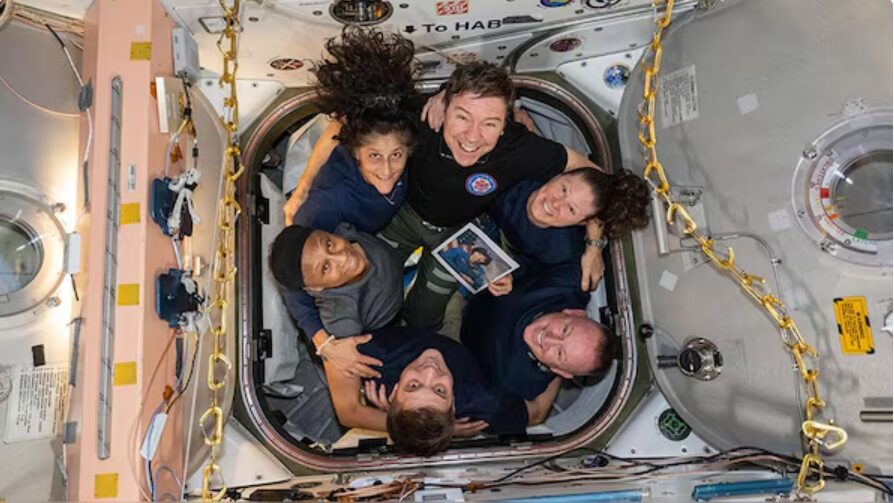Indian-American astronaut Sunita Williams and her colleague Barry “Butch” Wilmore embarked on a space mission expected to last eight days. However, more than two months later, they are still in space, with no definite timeline for their return. This delay has raised questions and concerns about their extended stay aboard the International Space Station (ISS).
The Mission’s Original Plan
Williams and Wilmore launched aboard Boeing’s Starliner spacecraft on June 5, 2024. The mission aimed to test the new spacecraft’s capabilities before its regular use. The plan was simple: spend eight days at the ISS and return on June 26. Unfortunately, this plan quickly encountered serious issues.
Technical Problems in Space
Even before docking at the ISS, the Starliner faced multiple technical challenges. The propulsion system showed leaks, and several thrusters stopped functioning. Although the spacecraft managed to dock safely at the ISS, five helium leaks were discovered later. Helium is crucial for pressurizing rockets and maintaining the spacecraft’s structural integrity, so these leaks are significant.
Additionally, five of the 28 maneuvering thrusters stopped working, and a propellant valve did not close completely. Despite these issues, Boeing has conducted extensive simulations to fix the problems, reportedly restoring 27 thrusters to full capacity. However, NASA remains cautious, requesting further data to ensure the spacecraft is safe for the astronauts’ return.
Exploring Alternatives for Return
With doubts surrounding the Starliner’s reliability, NASA is considering alternative ways to bring Williams and Wilmore back to Earth. One option is using SpaceX’s Crew Dragon spacecraft, part of the Commercial Crew Program (CCP). If Starliner remains unsafe, Williams and Wilmore could return on the Crew Dragon in February 2025.
Initially, the Crew-9 mission with the Dragon capsule was scheduled for August 18, 2024, but has since been postponed to no earlier than September 24, 2024. This mission was supposed to carry four astronauts, but two seats may now be reserved for Williams and Wilmore. This means the astronauts could spend over eight months in space if this plan proceeds.
NASA has also mentioned other potential solutions, such as having Williams and Wilmore return on a Russian Soyuz spacecraft. However, no final decision has been made yet, and discussions are ongoing.
Life in Space: The Impact on Astronauts
Williams and Wilmore have now been in space for over 60 days. To support their extended stay, NASA recently sent additional supplies, including food and clothes, via a SpaceX rocket. Despite the challenging situation, Williams reported feeling positive, saying, “It feels good to float around. It feels good to be in space and work up here with the International Space Station team.”
The astronauts have been keeping busy with various tasks, including scientific experiments in the Harmony module, which connects different international space labs and spacecraft. They have also been engaging in activities like gardening to pass the time.
However, the extended time in space is taking a toll on their health. Prolonged exposure to microgravity is causing Williams to experience bone density loss, a condition that can lead to more severe health issues, such as visual impairment and DNA damage. These health concerns make it even more urgent to bring the astronauts back to Earth.
The Future of the Starliner
If NASA decides to use another spacecraft to return Williams and Wilmore, the Starliner might be brought back to Earth under computer control, without any crew onboard. According to NASA’s associate administrator for space operations, Ken Bowersox, the likelihood of an uncrewed return has increased recently.
This situation is undoubtedly a setback for Boeing, which has been trying to compete with SpaceX in the space industry. While Boeing works to resolve the issues, the priority remains ensuring the safe return of the astronauts. The competition can wait until both Williams and Wilmore are back on Earth safely.
